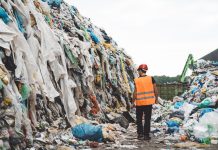Florika Fink-Hooijer, Director-General of the Directorate-General for Environment at the European Commission, charts the achievements and perspectives of Europe’s accelerating transition towards a more circular economy
In March 2023, the European Council of EU Heads of State and Government set about identifying the strategic priorities that would make Europe more competitive after 2030. One of the seven priorities they singled out was a transition towards a more circular economy. This switch, they said, would improve sustainability, lower input costs for EU industry, and reduce dependencies on primary materials.
Towards a more circular economy in Europe
This high-level recognition of the importance of circularity is the result of several years of sustained efforts to shift our economies and societies to a more solid footing for the longer term. Two multi-annual action plans, the most recent of which was adopted in 2020, are now bearing fruit, and the result is a wide range of new regulatory initiatives. They include specific measures for waste streams like municipal waste, textiles and food, and broader advances like a general shift towards a holistic, life-cycle approach. New regulations for Batteries and Packaging and Packaging Waste exemplify this change. It is also reflected in the proposal for a Regulation to enhance circularity in the automotive sector. And perhaps most important of all, it comes through very strongly in the ambitious new Regulation on Ecodesign for Sustainable Products which will soon come into force.
This new approach to Ecodesign mark a fundamental shift. From directives that required Member States to implement obligations, Europe is moving to regulations that directly specify obligations for economic operators. Businesses across the Union will immediately understand the new requirement
Under the previous system, when a product reached the end of its useful life, it simply became waste to be managed. The new approach sees the whole life-cycle factored in from the outset, with Ecodesign covering everything from design and use, repair to refurbishment and end-of-life.
As well as being good economic sense, this new approach to Ecodesign is absolutely in line with the changing geopolitical landscape. In the wake of the pandemic, the aggravating climate and biodiversity crisis and the ongoing war in Ukraine, we are all increasingly aware of the need to improve our use and re-use of material resources which are depleting. It will help consolidate our strategic autonomy, reduce our reliance on fossil fuels, and make an indispensable contribution to Europe’s decarbonisation. At the same time going circular reduces extraction and processing of precious resources and thus helps to preserve biodiversity.
Delivering on eco-design and lowering the uptake of resources
Europe’s new Ecodesign Regulation is a framework – it sets the tone and the conditions for sector-specific legislation that will play an increasingly important role for Europe’s industries in the years to come. The Commission will propose these sector-specific standards after a careful assessment of the potential impacts, working hand-in-hand with Member States, industry, and public opinion across the EU. The result will be a blend of sustainability criteria that apply directly to products such as textiles, aluminium, rubber and steel, and cross-cutting requirements that cover issues like reparability, re-use, recycled content and other structural elements.
With the framework conditions now in place, Europe’s citizens and business will be increasingly aware of the shift, as these sector-specific conditions are phased in over the years to come.
Scaling up circular business models
No regulatory change, however comprehensive or ambitious it might be, can restructure reality on its own. Large-scale economic and social change can only come about when these regulatory changes are combined with a new manner of doing business. So what Europe also needs a significant expansion in business models that are built around the idea of greater circularity. A different, more modern economic ecosystem, where new rules on reparability, refurbishing, re-use, recycled content are combined with ‘servitization’ – where customers pay for a service like air conditioning, rather than investing in the equipment themselves. A new ecosystem along these lines would support circularity on a grander scale, boosting the economic efficiency of the circular economy as it grows, and creating new job opportunities that respond to labor market shifts brought about by the transition.
A shift on this scale will take more than one political cycle, and remains a major objective for the years to come. If we want to see a decisive shift in favour of circularity, and a sustained improvement in the Europe’s resource efficiency, the steps to take are clear. We need today’s pioneering circular business models to become far more widespread. We need to circularity to become a mainstream economic practice.











